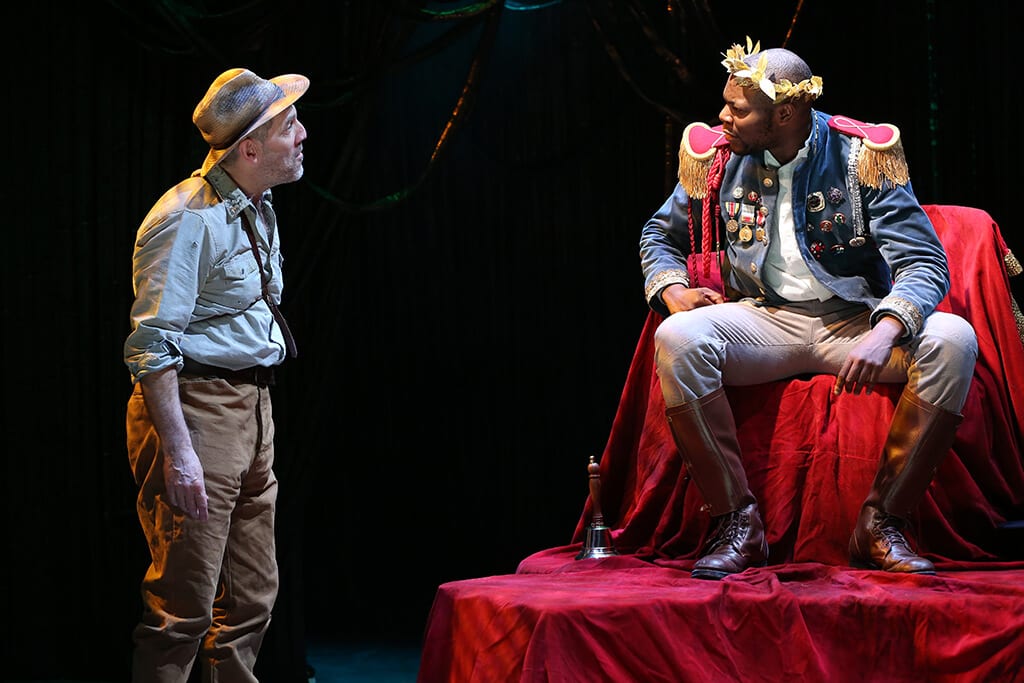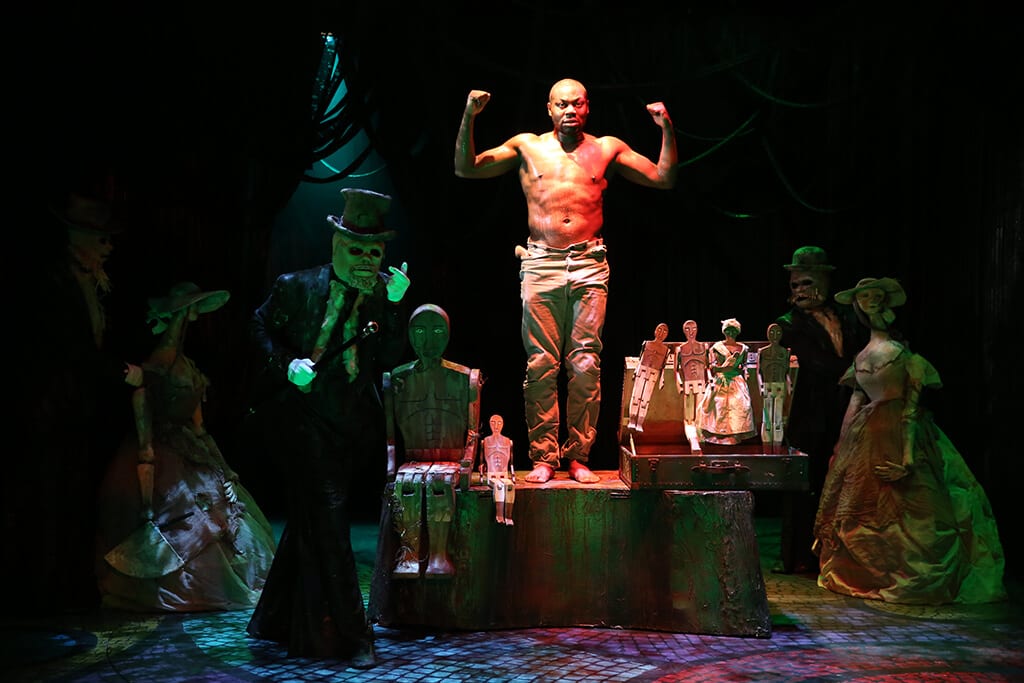On the one hand, this is a chance to be fully immersed in a milestone of Expressionism, executed with unbridled commitment by a talented team of theater artists.
After his first Pulitzer, The Emperor Jones was O’Neill’s first big commercial success, fascinating audiences by putting the fears and inner torments of its protagonist on stage. The soon-to-be-deposed, criminal, tinhorn dictator of a small Caribbean nation, Brutus Jones, one-time Pullman porter, is on the run through a night in the jungle to save his scheming hide. We hear the drumbeats of the opposition quickening through the ordeal, along with his pulse and ours. The trees and vines sway, block, and envelop him, another smothering, unstoppable army. We count down Jones’s remaining bullets as he tumbles into fever-dream encounters with those he has wronged, with ancestral injustices and spirits. Choreographer Barry McNabb, Puppet and Mask Designer Bob Flanagan, the whole set, music, sound design, and lighting team, and of course Director O’Reilly and Obi Abili in the lead, achieve an unforgettable theatrical experience that will stir you and leave you shaken.
RADA-trained Abili gives an impressively physicalized, fearless performance. He seems racked with terrors, contorted with torments, pressing on through strength of muscle and will. When still in power, his slouch says all. He handles O’Neill’s potentially cartoonish African-American dialect with a more updated street bravado. It works.
Costumer Whitney Locher does not disappoint with the classic overblown, epauletted and bemedaled tailcoat, shed over the course of the night’s tribulations along with other trappings of power and Western civilization.
And now we come to “On the other hand”. It seems to me a worthy enterprise to mount a pivotal work by arguably America’s greatest dramatist–and a consciously Irish-American one too, at the Irish Rep after all. But it is damned uncomfortable. O’Neill’s Jones and the cockney sidekick Smithers both use the n-word freely. Charles Gilpin, the first and supposedly best ever Brutus Jones of the original production, kept changing the n-bombs to “Negroes”, “black babies”, and “my people”, until O’Neill finally fired him and replaced him with the young Paul Robeson.
But it’s not just that. O’Neill seems to be giving us a kind of morality tale. He finds the origins of Jones’s criminality in the monstrous crimes and indignities visited on him and other African-Americans by the kleptocratic white majority. But as Brutus Jones faces his demons, he is stripped down and becomes a mere brute, pulled down by the same spiritual forces that dominate the beliefs of the “bush (n-words)” he hoodwinked into revering him as Emperor. We know O’Neill’s was a liberal, even radical spirit. But his understanding comes off today as kind of ugly and essentialist.
If ever there were a good reason for an audience talkback with director and cast, this is it. We have to deal with this. Director Ciaran O’Reilly employs an experiment from other O’Neill plays, having the local people all in masks. The effect is both distancing and chilling. Maybe not having to show their faces also makes it a little easier for actors to embrace this troubling, important work.



